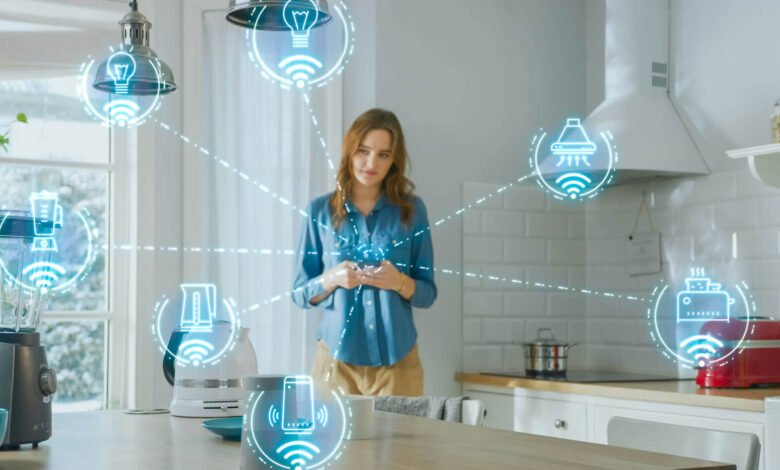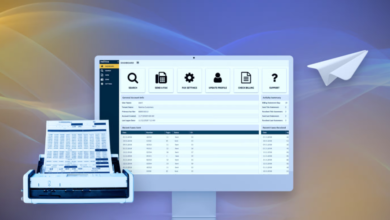Smart Home Upgrades: Simple Ways to Boost Safety and Efficiency

Why Consider Smart Home Upgrades?
As technology continues to evolve, modernizing your home to incorporate smart features is no longer a luxury reserved for tech enthusiasts. It has become an important step for any homeowner who wants to maximize comfort, reduce financial burden, and take proactive steps toward home safety and efficiency. The integration of smart devices can revolutionize daily living by automating repetitive tasks, monitoring energy usage, and even alerting you to safety hazards while you’re away. Recent findings by the U.S. Department of Energy indicate that specific upgrades, such as home automation systems and programmable devices, can help families decrease their energy costs by up to 12% annually—a significant saving that not only benefits your wallet but also the environment.
Beyond convenience and savings, integrating smart home features is a proactive way to secure your property and loved ones. Technology like connected cameras, automated door locks, or alarm systems can help prevent break-ins or alert you in case of emergencies. For example, if a power outage disrupts your home’s smart systems, being prepared with a backup solution such as whole home generator installation in Hendersonville NC ensures that critical systems remain operational, keeping your smart home upgrades working smoothly even during extreme weather or unforeseen outages. Comprehensive strategies like these not only safeguard your tech investments but also provide peace of mind that your daily routines and home safety are continuously protected.
The Basics: What Is a Smart Home?
A smart home is a residence equipped with connected devices that communicate and automate daily tasks to create a more comfortable, efficient, and secure environment. These devices—ranging from thermostats and security cameras to appliances—are often linked via a central hub or smartphone app, giving homeowners the ability to monitor and control various systems anytime and from anywhere. Internet-enabled thermostats, for instance, automatically adjust heating and cooling based on occupancy or your preferences, providing both comfort and energy savings. Remotely managed lights offer scheduling, dimming, and customization, while smart doorbell cameras send instant alerts when someone is at the door. Whether your priority is convenience, cost savings, or security, the adaptability of smart home upgrades allows you to personalize your setup for any need, regardless of your home’s size or age. For homeowners looking to modernize older properties or optimize new builds, these features provide an opportunity to blend classic charm with modern convenience. You don’t need to make every change at once. The beauty of these systems lies in their scalability; you can start small and gradually expand your ecosystem as your needs or budget allow.
Easy Smart Home Upgrades for Beginners
Choosing where to start can feel daunting, but it doesn’t have to be. Here are beginner-friendly options that provide immediate benefits:
- Smart thermostats optimize heating and cooling by learning your routine, helping you stay comfortable while trimming up to $140 a year from energy costs. These devices can often be installed in under an hour and start learning your habits right away, automatically adjusting temperatures for maximum efficiency without sacrificing comfort.
- Wi-Fi-enabled lights offer customizable control through voice commands or mobile apps, enhancing security and ambiance with effortless automation. You can schedule them to simulate your presence even when you’re away or create lighting scenes for every occasion. Many options work seamlessly with popular voice assistants, making daily operations completely hands-free.
- Smart plugs transform ordinary electronics into smart devices—turning on coffee makers or lamps from anywhere with your phone. An affordable first step, smart plugs help you track energy usage and prevent “vampire” power drain from devices left plugged in unnecessarily.
These beginner upgrades allow you to experience the practical benefits of smart living without a major investment or technical expertise. Most products come with clear installation instructions, and many can be set up with just your smartphone and Wi-Fi network.
See also: Unveiling the Unparalleled Power of AI Image Detection Technology
Boosting Home Security Effortlessly
Security is one of the fundamental priorities for any home. Integrating smart tools, like video doorbells and motion-activated cameras, offers robust protection and peace of mind. Real-time alerts can be sent straight to your phone, ensuring you always know what’s happening—even when you’re away. Whether you are traveling or simply running errands, being able to monitor your property from afar brings immense reassurance that your home and family are protected. Modern, connected alarm systems are now easy to install and manage, providing another layer of safety whether you own or rent your home. Some systems allow for remote arming, disarming, and even integration with local emergency response teams. Features such as two-way communication via doorbell cameras let you interact with visitors or delivery drivers, deterring potential intruders with the simple press of a button. With minimal ongoing costs and intuitive mobile interfaces, boosting home security through smart upgrades is more accessible than ever.
Improving Safety: Smoke Detectors and Leak Sensors
Smart safety devices take home protection a step further. Upgrading to smart smoke detectors is especially wise, as they not only sound local alarms but also send notifications directly to your smartphone—no matter your location. This rapid warning can make all the difference in an emergency, giving you precious extra moments to respond or alert authorities. Some advanced units even include built-in carbon monoxide detection, consolidating critical safety features into a single device. Similarly, water leak sensors placed under sinks, appliances, or in basements offer early detection of leaks, often preventing expensive damage. These sensors can automatically alert you to moisture or water accumulation, allowing you to take action before costly structural damage occurs or mold has a chance to develop. According to the National Fire Protection Association, replacing smoke alarms every ten years is a recommended best practice, making smart models a future-focused investment that goes beyond regular safety standards.
Creating an Efficient, Eco-Friendly Home
Energy efficiency goes hand-in-hand with smart technology. Devices capable of monitoring and analyzing real-time energy use empower homeowners to make cost-saving adjustments. For instance, energy monitors provide detailed breakdowns of consumption, helping you pinpoint appliances or behaviors that drive up costs. Features like motion-sensing lights automatically shut off when rooms are empty, while connected appliances can be programmed to operate during off-peak rates, translating to immediate and ongoing savings. According to CNET, using home energy monitors can help individuals identify waste and reduce electricity bills. Collectively, these improvements shrink your carbon footprint, supporting a more sustainable lifestyle. Options like automated window shades can regulate sunlight and reduce cooling costs, while smart irrigation controllers conserve water. With features that make eco-friendly living simple, smart upgrades help you make a big impact with small daily choices.
Common Myths About Smart Home Technology
Misconceptions can deter some households from adopting smart tech. Many believe these upgrades are expensive or require professional installation. In reality, a wide range of products is designed for easy do-it-yourself setup, allowing gradual and budget-friendly improvements. Entry-level devices frequently cost less than $50, and installation typically involves clear instructions and minimal tools. Security concerns are also manageable—choosing encrypted devices, changing default settings, and maintaining a secure Wi-Fi network greatly minimize data risks. Staying informed and vigilant about privacy settings ensures your home’s network remains safe from unauthorized access. Leading manufacturers continuously update their devices to address vulnerabilities, giving you more confidence with every new purchase.
Maintaining an Upgraded Home
Ongoing upkeep is essential for maximizing the longevity of smart home technologies. Regularly update device software to patch vulnerabilities and improve performance. Routine inspections—both at the DIY and professional level—ensure everything runs as intended. Simple actions like cleaning sensors or replacing batteries safeguard your investment, maintaining both reliability and peace of mind. Testing emergency systems, such as alarms and detectors, helps guarantee they remain operational should you ever need them. Developing a maintenance checklist and setting reminders for periodic system reviews can further extend the lifespan of your devices. A well-maintained smart home stands ready for years of enhanced safety, efficiency, and comfort.
Conclusion: Embrace a Smarter, Safer Home
Smart home technology has evolved from a luxury into an accessible way to enhance daily living, improve safety, and reduce energy costs. From beginner-friendly upgrades like smart thermostats and plugs to comprehensive security systems and eco-friendly devices, each improvement adds convenience, efficiency, and peace of mind. By addressing common myths, prioritizing safety, and maintaining your devices, you ensure your smart home continues to operate reliably for years. Gradual adoption allows homeowners to tailor upgrades to their lifestyle and budget, making technology work seamlessly with daily routines. Ultimately, smart home features empower you to take control of your environment, protect your property, and contribute to a more sustainable future while enjoying the comfort and security of a modern, connected home.




